Sony’s L-Shaped F707 Camera is Still Strange and Exciting 22 Years Later
The latest vintage digital camera to get Gordon Laing’s fantastic “Retro Review” treatment is 2001’s Sony Cyber-shot F707 camera. The L-shaped 5-megapixel camera was sold as a premium all-in-one compact.
Laing says that in the early 2000s, the camera cost “the best part of a grand,” while he grabbed a used version from eBay for around $5.
“That’s a bargain for one of my favorite all-time digital cameras,” he explains.
The Sony Cyber-shot F707’s interesting design is among the many reasons why Laing has a soft spot in his heart for the camera. The L-shaped body, which debuted with Sony’s F505 in 1999, stood out during a time when companies were shying away from unique or original body designs in favor of traditional camera shapes.
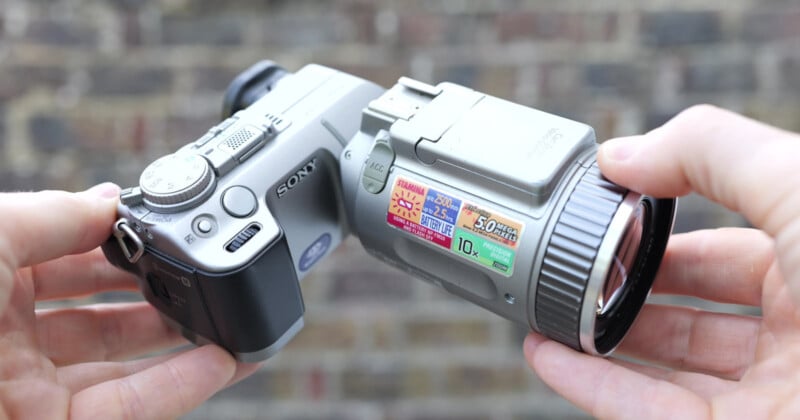
“Despite only being hinged on one side, the mechanism on all the models which employed it, from the 505 to 828, all felt robust in your hands and smooth to adjust, with a satisfying notch letting you know when the lens barrel and body were both facing forward. It worked brilliantly and in my view remains an ergonomic triumph, albeit one that’s only practical with a smallish sensor which is why we don’t see it on larger-sensor cameras today,” Laing writes.
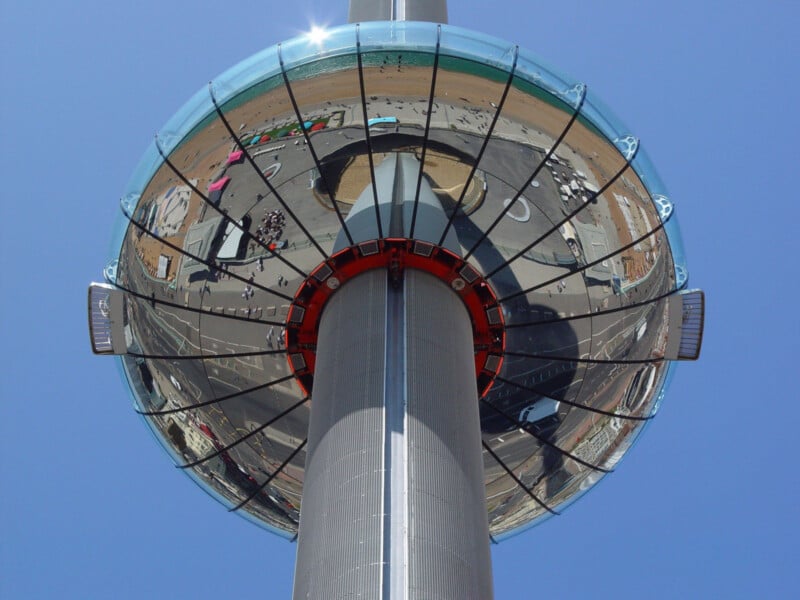
The F707’s lens may offer the same focal length as the F505’s 5x zoom, roughly 38-190mm, but the Carl Zeiss optic in the F707 sports a brighter f/2-2.4 aperture, versus the f/2.8-3.4 iteration in the F505.
Like the F505, the F707 also includes a popup flash above the lens barrel, although the F707 added an automatic flash release. The lens barrel also has revised controls, including adjustments for white balance, metering mode, and switching between automatic and manual focus.
The Sony F707 offered users an impressive suite of exposure controls for its time. Photographers could use Program Auto, Shutter Priority, Aperture Priority, and Manual modes, much like modern DSLR and mirrorless interchangeable lens cameras. The F707 even shoots video, albeit at only 320×240 resolution at 16 frames per second, and has a built-in microphone.
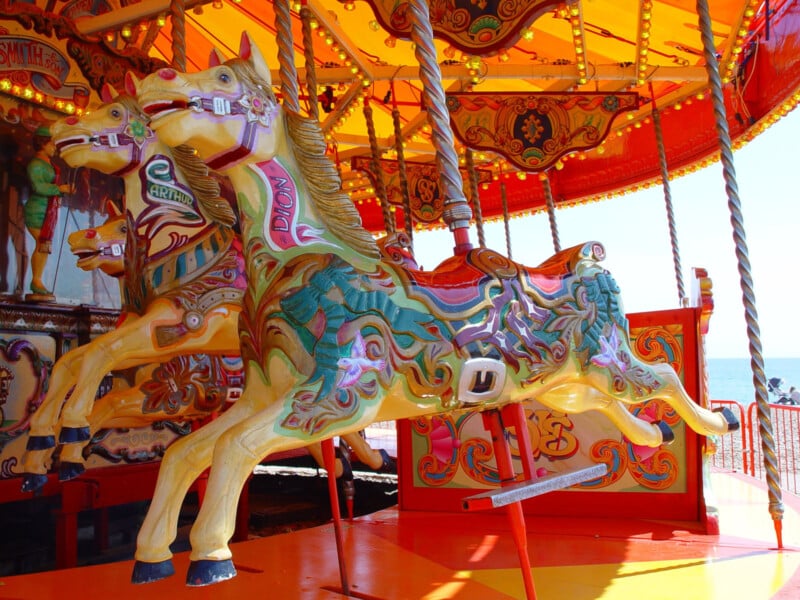
While the upgraded lens and relatively impressive 5-megapixel Type 2/3 sensor helped set the F707 apart from its predecessors, Sony also introduced some rather fancy features to the camera, including Hologram AF mode. Making its debut on the F707, Laing explains that this mode promised improved low-light autofocus performance. The camera uses a low-power laser to project diagonal lines onto a subject, providing the camera’s contrast-detect autofocus system something to focus on.
“Its success varies depending on the subject and distance, but give it a person in a typical portrait or group composition, and it will genuinely improve your chances of a sharp image even if it’s very dark,” Laing says.
Another low-light feature is “Nightframing.” This technology first appeared in Sony camcorders and moves the F707’s infrared-blocking filter out from in front of the image sensor, allowing the camera to use built-in infrared lights to expose a subject in the dark. The results resemble the military-issue night vision goggles featured in television shows and movies. However, the feature is only for framing as the IR-cut filter moves back in front of the image sensor when the user fully presses the shutter release.
However, in “Nightshot” mode, the filter stays out of the way, allowing photographers to photograph weird green images in the dark to their heart’s content.
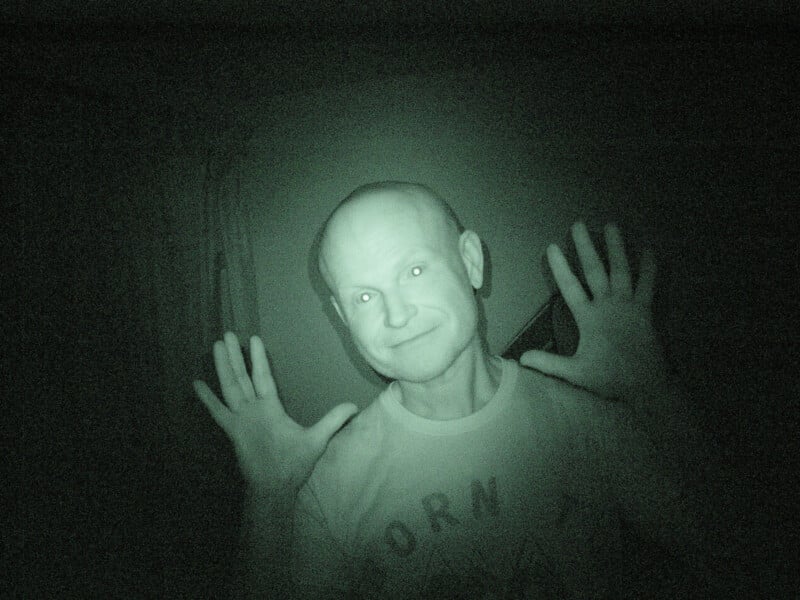
Infrared photographers may be salivating at the idea of a camera that allows the user to easily disable the infrared-blocking filter. Sure enough, some enthusiasts have used the F707 for more typical IR photography with specialized filters.
As Laing explains, users can even use a magnet to move the F707’s internal IR filter, enabling full-spectrum photography with control over exposure settings, which are limited in Nightshot mode. Laing will investigate this topic further in future Retro Reviews for the Sony F717 and 828 cameras, which also work for full spectrum photography.
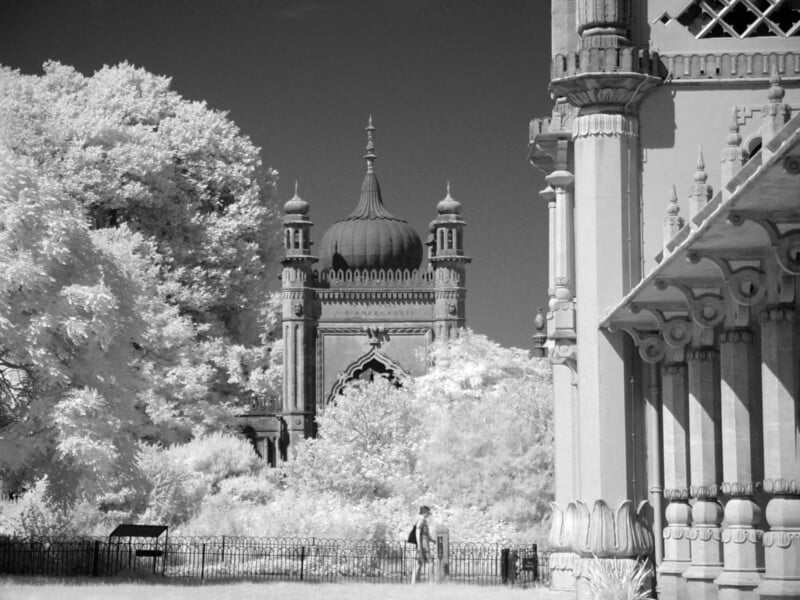
“The F707 could literally do things other cameras could only dream of, and looked the part too. I loved it when I originally reviewed it in 2001, and it still makes me smile over 20 years later. Sure it’s heftier than the 505, but gives you so much more, and the images still stand up today,” concludes Laing.
Gordon Laing’s detailed Sony Cyber-shot F707 Retro Review and additional sample images are available on Camera Labs. More of his excellent Retro Reviews videos are available on his YouTube channel Dino Bytes.
Image credits: All images © Gordon Laing / Camera Labs